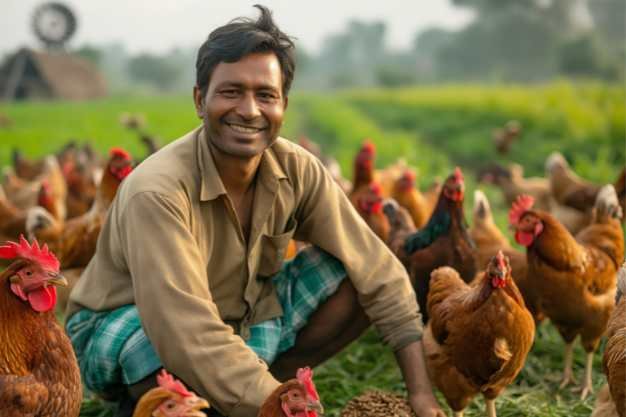Latest News
Economic Survey 2024-25 | Powerful Insights on Agriculture Growth, Climate Impact & Policy Reforms

Overview of this Blog
The Economic Survey 2024-25 highlights steady 5% growth in agriculture, urging a shift from water-dependent crops and better irrigation. It stresses climate change impact, promotes drip irrigation, and calls for policy changes to balance cereal, pulse, and oil production. Investments in R&D and digital tech can boost farm productivity.

Presented to Parliament on Friday, the Economic Survey for 2024-25 (FY25) said that a consistent and steady growth of agriculture at roughly 5%, with a 20% share of overall GVA (gross value added) in the economy, would absorb surplus labor as output per worker and output per hectare rise would be absorbed. This was said in light of agriculture’s already twenty percent share of the national GDP.
Apart from this, it promoted farming in India to be “free, empowered, and emboldened” in order to shift away from crops dependent on water, as well as for the development of irrigation and expenditures in agricultural research in order to fight climate change.
Over the past ten years, agricultural revenue has increased by 5.23 percent annually, per the Survey. This runs counter to the rise of 5.80 percent for the economy overall and of 6.24 percent for non-agricultural income. Reforms to public policy were suggested to lower the too high cereal production and simultaneously boost the pulse and edible oil production. Any increase in farmers’ income not only raises their quality of living but also lowers the risks the banking industry faces since farmers can pay back loans on time. Vishal Sharma, cofounder and CEO of AdvaRisk, a fintech company funded by ICICI and Nabard, said.
About climate change, the Survey said that compared to floods and cold waves, most research have shown that droughs and heat waves have a negative impact on Indian agricultural output. To increase the crops’ heat and water resistance, it is also crucial to enlarge the irrigated area and vary the produced crops.
Markets and the Macroeconomy
Economic Survey 2024-25
The economy may suffer from too financialization. Cop29, climate change, pollution, the global carbon project, 2024 global carbon project emissions from fossil fuels, Cop29, data ,In the economic study, strike a mix between climate action and fossil fuel investments.
The climate
The success of Viksit Bharat and the growth of the economy depend on actions on climate change. Healthcare; rural region healthcare; healthcare professional. Conversely, a poll indicates that although OOPE is declining, school enrollment is rising.
Food components, food packaging, and nutritional worth
It is time to correct any false claims regarding nutrition in the Economic Survey for 2024–25. The poll referenced a study carried out in Indian areas over the kharif season for nine major crops. According to the analysis, significant crop output losses and huge rainfall deficits are obviously linked.
A statistical phenomenon known as “lower tail dependence” shows that, for appreciable rainfall deficits, the correlation between yield losses and rainfall deficits is stronger than it is for little changes. This is particularly true in cases of really severe rainfall shortages.
The Survey states “Other studies have indicated that a potential 2°C rise in annual temperature and a 7 percent increase in annual rainfall by 2099 could lead to an 8-12 percent decline in agricultural productivity in India [in the year 2099]”.
The Survey said that drip irrigation enhances agricultural outcomes based on the results of another study carried out in Tamil Nadu in the past year to examine the effects on five different horticultural crops. Among these were watermelon, mango, tomato, banana, and brinjal. Because of its targeted water distribution, it can reduce water use by 39–55 percent while concurrently raise crop yields by 33–41 percent when compared to flood irrigation. The Survey said, “this efficiency translates to substantial economic benefits for farmers, with profit margins increasing by 52.92-114.50 percent, depending on the crop (for example, brinjal, mango).” “This efficiency gives farmers rather large financial gains.”

It dedicated a substantial section to exploring the rising frequency of extreme weather events in India as well as their possible consequences for the agriculture sector. The Survey claims that sustainable long-term benefits could be produced by means of investments in research and development (R&D). These expenditures can be directed into micro-irrigation, enhanced agricultural techniques, diversification to high-yield, climate-resistant crops, and climate-resistant cultivars. Survey results indicate “the widespread adoption of digital technologies in agriculture will unlock further possibilities for enhancing productivity.”
According to the Survey, it is feasible to lower the overproduction of cereals and solve the underproduction of pulses and edible oils by means of the correct set of policies spanning all levels of government. It also demands letting India’s farmers get price signals from the market free from any restrictions, with distinct systems meant to handle the effect of cost of living on households worthy for particular times.












